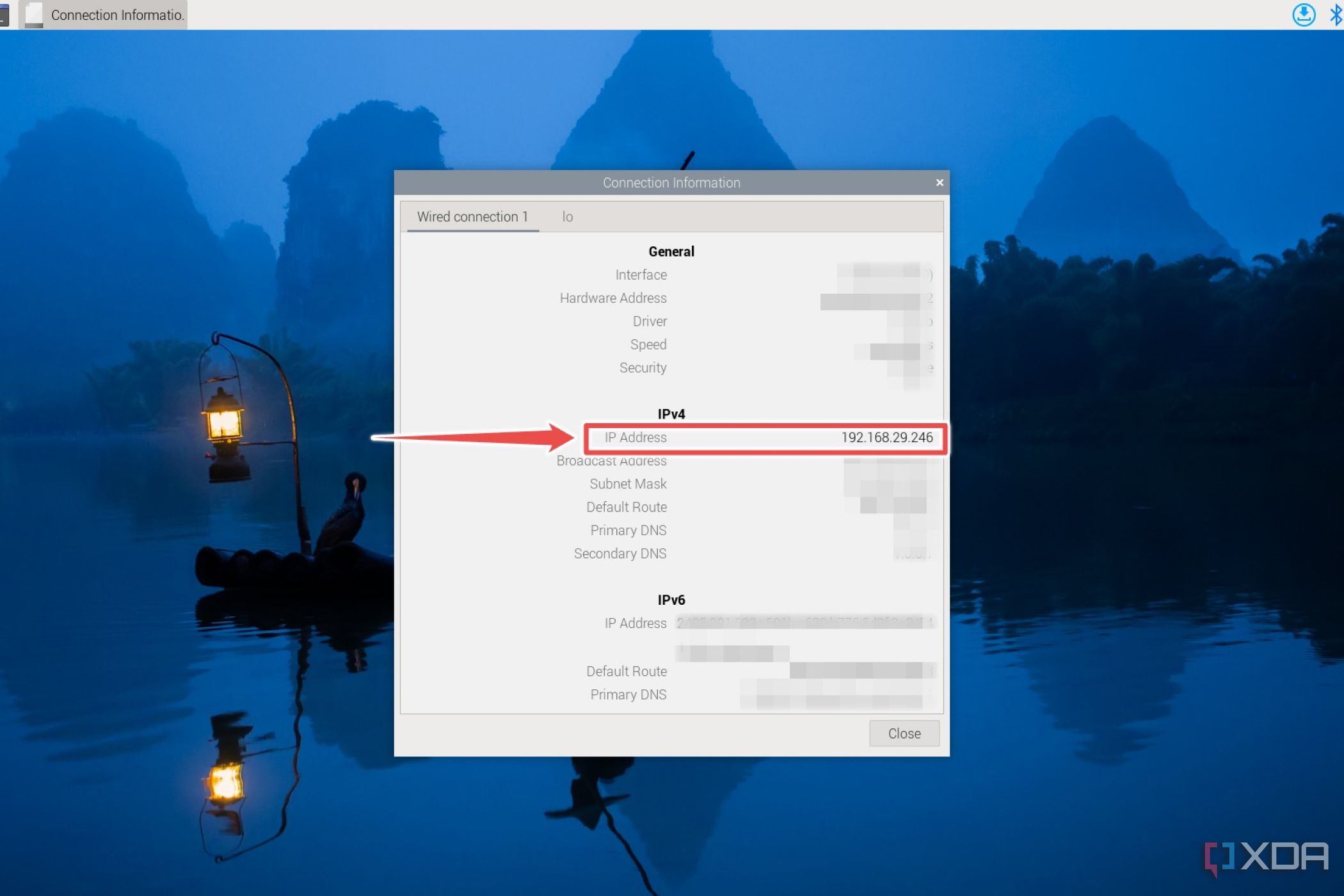So, you're thinking about diving into the world of Raspberry Pi, huh? Well, let me tell you, it's one of the coolest gadgets you can play around with these days. Whether you're a hobbyist, a tech enthusiast, or even a professional looking to build something innovative, the Raspberry Pi has got your back. But here's the deal—if you're serious about making the most out of this little powerhouse, you need to know how to securely and directly connect Raspberry Pi IP address. This isn't just about connecting to your network; it's about doing it safely so you don't end up with some random hacker messing with your setup. Trust me, no one wants that!
Now, before we dive deep into the nitty-gritty of how to securely and directly connect Raspberry Pi IP address, let's take a moment to understand why this is important. Imagine your Raspberry Pi as a mini-computer that can control everything from home automation systems to weather stations. If you're not careful with how you connect it to your network, you could expose sensitive data or even give unauthorized access to your entire system. That’s where secure connections come in—they’re like the bouncers at a club, making sure only the right people get in.
Alright, so now that we've got the basics down, let's talk about what you're really here for. In this guide, we're going to break down everything you need to know about securely and directly connecting Raspberry Pi IP address. From setting up your network to using advanced tools, we'll cover it all. So, buckle up, because we're about to take a deep dive into the tech side of things!
- Shaquille Oneal Net Worth The Inside Scoop On The Iconic Legends Fortune
- Sheabriar Onlyfans The Ultimate Guide To Her Content Career And Community
Understanding Raspberry Pi and Its IP Address
First things first, let's get a handle on what exactly the Raspberry Pi is and why its IP address matters so much. Think of the Raspberry Pi as a tiny computer that fits in the palm of your hand. It's super versatile and can be used for a variety of projects, from building a media center to creating a smart home hub. But just like any other device on your network, it needs an IP address to communicate with other devices.
The IP address is basically the digital address of your Raspberry Pi. Without it, your Pi wouldn't be able to connect to the internet or communicate with other devices on your network. So, yeah, it's kind of a big deal. Now, when we talk about securely and directly connecting Raspberry Pi IP address, what we're really talking about is ensuring that this connection is protected from potential threats.
Why Secure Connections Matter
Here's the thing: the internet can be a wild, wild west sometimes. There are all sorts of bad actors out there looking for vulnerabilities in your network. If your Raspberry Pi isn't properly secured, you could be opening yourself up to all kinds of risks. For example, someone could gain access to your device and use it for malicious purposes, like launching a DDoS attack or stealing your personal data.
- What Is Erika Jayne Net Worth A Deep Dive Into Her Glamorous World
- Larry Elder Net Worth The Untold Story Of A Media Icon
By securely and directly connecting Raspberry Pi IP address, you're putting up a digital fortress around your device. This means that only authorized users can access it, and any unauthorized attempts will be blocked. It's like having a lock on your front door—it may not stop every single intruder, but it sure makes things a lot harder for them.
Setting Up Your Raspberry Pi for Network Connectivity
Alright, so now that we understand the importance of securely and directly connecting Raspberry Pi IP address, let's talk about how to actually set it up. The first step is to make sure your Raspberry Pi is properly configured for network connectivity. This involves a few key steps, so let's break it down.
Step 1: Install the Latest Raspberry Pi OS
Before you do anything else, you need to make sure you're running the latest version of the Raspberry Pi operating system. This ensures that you have all the latest security patches and features. You can download the latest version from the official Raspberry Pi website and follow the installation instructions. Trust me, it's worth the effort!
Step 2: Configure Your Network Settings
Once you've got the OS installed, it's time to configure your network settings. This involves setting up your Wi-Fi or Ethernet connection, depending on how you plan to connect your Raspberry Pi to your network. Make sure you use strong passwords and encryption methods to protect your connection.
Step 3: Find Your Raspberry Pi IP Address
Now that your Raspberry Pi is connected to your network, it's time to find its IP address. You can do this by running a simple command in the terminal: hostname -I. This will display the IP address of your Raspberry Pi. Easy peasy, right?
Securing Your Raspberry Pi Connection
Alright, so now that your Raspberry Pi is connected to your network, it's time to make sure it's secure. There are a few key steps you can take to ensure that your connection is as safe as possible. Let's go over them one by one.
Enable SSH for Remote Access
One of the most useful features of the Raspberry Pi is SSH, which allows you to access your device remotely. However, SSH can also be a potential security risk if it's not properly configured. To secure your SSH connection, you should:
- Use strong passwords or better yet, key-based authentication.
- Change the default SSH port to something less common.
- Disable root login to prevent unauthorized access.
Use a Firewall for Extra Protection
Another great way to secure your Raspberry Pi connection is by using a firewall. A firewall acts as a barrier between your device and the outside world, blocking any unauthorized access attempts. You can use tools like ufw (Uncomplicated Firewall) to set up a firewall on your Raspberry Pi. It's super easy to use and provides a lot of protection.
Advanced Techniques for Secure Connections
For those of you who want to take your security to the next level, there are some advanced techniques you can use to further protect your Raspberry Pi connection. Let's take a look at a few of them.
Set Up a Static IP Address
By default, your Raspberry Pi will use a dynamic IP address, which can change every time you reconnect to your network. While this isn't inherently bad, it can make things a bit tricky if you're trying to access your device remotely. To avoid this, you can set up a static IP address for your Raspberry Pi. This ensures that your device always has the same IP address, making it easier to connect to.
Implement VLANs for Network Segmentation
If you're really serious about security, you might want to consider implementing VLANs (Virtual Local Area Networks) to segment your network. This allows you to separate your Raspberry Pi from other devices on your network, reducing the risk of unauthorized access. It's a bit more advanced, but it can provide a lot of protection.
Tools and Resources for Securing Your Raspberry Pi
There are a ton of tools and resources out there that can help you securely and directly connect Raspberry Pi IP address. Let's take a look at a few of them.
Raspberry Pi Documentation
The official Raspberry Pi documentation is an invaluable resource for anyone looking to secure their device. It covers everything from basic setup to advanced security techniques. You can find it on the Raspberry Pi website, and it's totally free to use.
Security Forums and Communities
Another great resource is the various security forums and communities out there. These are filled with like-minded individuals who are passionate about security and willing to share their knowledge. Some popular ones include Reddit's r/pi and Stack Exchange's Raspberry Pi section.
Troubleshooting Common Issues
Even with the best security measures in place, things can still go wrong. Here are a few common issues you might encounter when trying to securely and directly connect Raspberry Pi IP address, along with some troubleshooting tips.
Can't Connect to the Network
If you're having trouble connecting your Raspberry Pi to your network, the first thing you should do is double-check your network settings. Make sure you've entered the correct Wi-Fi password or Ethernet configuration. If that doesn't work, try rebooting your device and checking for any firmware updates.
SSH Connection Issues
If you're having trouble with your SSH connection, it could be due to a variety of reasons. First, make sure that SSH is enabled on your Raspberry Pi. You can do this by running the command sudo raspi-config and navigating to the SSH option. If that doesn't work, try resetting your SSH keys or checking your firewall settings.
Best Practices for Long-Term Security
Finally, let's talk about some best practices for maintaining the security of your Raspberry Pi connection over the long term. These are things you should be doing regularly to ensure that your device remains protected.
Regularly Update Your Software
One of the most important things you can do to keep your Raspberry Pi secure is to regularly update your software. This includes not only the operating system but also any third-party applications you may be using. Updates often include important security patches that can protect your device from known vulnerabilities.
Monitor Your Network Traffic
Another good practice is to monitor your network traffic for any suspicious activity. You can use tools like tcpdump or Wireshark to analyze your network traffic and detect any potential threats. This can help you catch any unauthorized access attempts before they become a problem.
Conclusion
Alright, so there you have it—everything you need to know about securely and directly connecting Raspberry Pi IP address. From setting up your network to implementing advanced security measures, we've covered it all. Remember, security isn't something you can just set and forget. It requires ongoing effort and vigilance to ensure that your Raspberry Pi remains protected.
So, what are you waiting for? Get out there and start securing your Raspberry Pi connection today! And don't forget to leave a comment below if you have any questions or feedback. We'd love to hear from you!
Table of Contents
- Understanding Raspberry Pi and Its IP Address
- Why Secure Connections Matter
- Setting Up Your Raspberry Pi for Network Connectivity
- Step 1: Install the Latest Raspberry Pi OS
- Step 2: Configure Your Network Settings
- Step 3: Find Your Raspberry Pi IP Address
- Securing Your Raspberry Pi Connection
- Enable SSH for Remote Access
- Use a Firewall for Extra Protection
- Advanced Techniques for Secure Connections
- Set Up a Static IP Address
- Tools and Resources for Securing Your Raspberry Pi
- Troubleshooting Common Issues
- Best Practices for Long-Term Security
- Kordell Beckham Net Worth The Rising Stars Financial Journey
- Adam Sandler Net Worth The Inside Scoop On His Crazyrich Career


